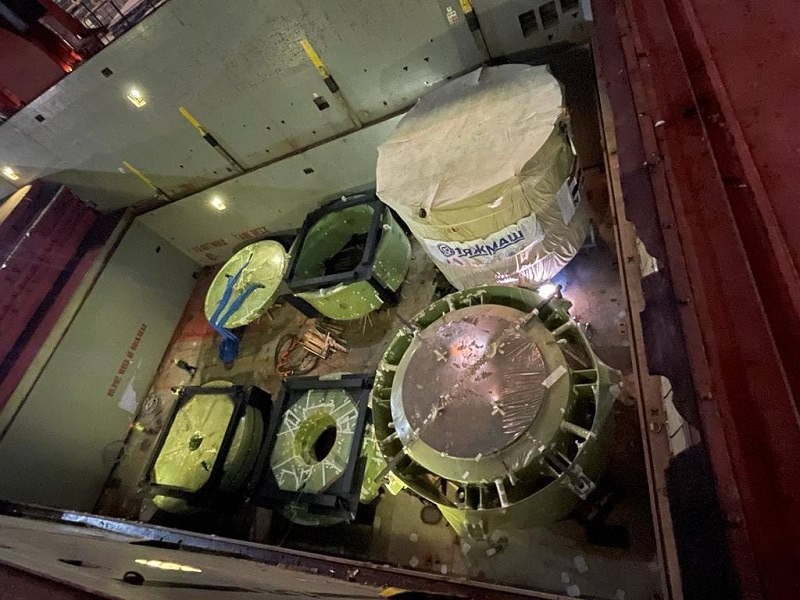 A melt localisation device (melt trap or core catcher) has been delivered for unit 2 of El Dabaa NPP under construction in Egypt, Rosatom’s Engineering Division said. A consignment containing the three main components of the melt trap left Russia in mid-October and was delivered ahead of schedule. The melt trap is one of the most important elements of the passive safety system for NPPs with generation III +VVER-1200 reactors. The melt trap for unit 1 was installed in October.
A melt localisation device (melt trap or core catcher) has been delivered for unit 2 of El Dabaa NPP under construction in Egypt, Rosatom’s Engineering Division said. A consignment containing the three main components of the melt trap left Russia in mid-October and was delivered ahead of schedule. The melt trap is one of the most important elements of the passive safety system for NPPs with generation III +VVER-1200 reactors. The melt trap for unit 1 was installed in October.
El Dabaa NPP will comprise four units with generation III+ VVER-1200 pressurised water reactors. The NPP is being constructed in accordance with contracts that entered into force in 2017. The $30bn project is mainly financed through a $25bn Russian loan. Rosatom will supply nuclear fuel throughout the lifecycle of the plant, arrange for the training of the Egyptian personnel, and assist in the operation and maintenance of the plant for the first 10 years. The reference plant for El Dabaa is the Leningrad-II NPP. Construction of all four units is planned for completion by 2028-2029 and Egypt expects that the NPP will reach full capacity by 2030.
“In early October, the installation of the melt localisation device for the first unit began, and … second trap will be installed … before the end of the year,” said Alexey Kononenko, ASE Vice President & Director of the El-Dabaa NPP construction project. “The coordinated work of the general contractor, customer and contracting organisations helps us build the safest nuclear power plant in the world and achieve new successes in our large international project.”
“Our team completed inspections and acceptance tests in Russia of this long-term manufacturing equipment before it was shipped to Egypt, said Mohamed Ramadan Badawi, General Manager for El-Dabaa Project Management at Egypt’s Nuclear Power Plants Authority (NPPA). “Earlier this year, NPPA, together with other interested parties, completed construction of all the infrastructure necessary for the supply of heavy and bulky equipment for nuclear power plants, by building and commissioning port facilities on the site. We look forward to the successful development of the project in accordance with the schedule.”
Image courtesy of Rosatom



